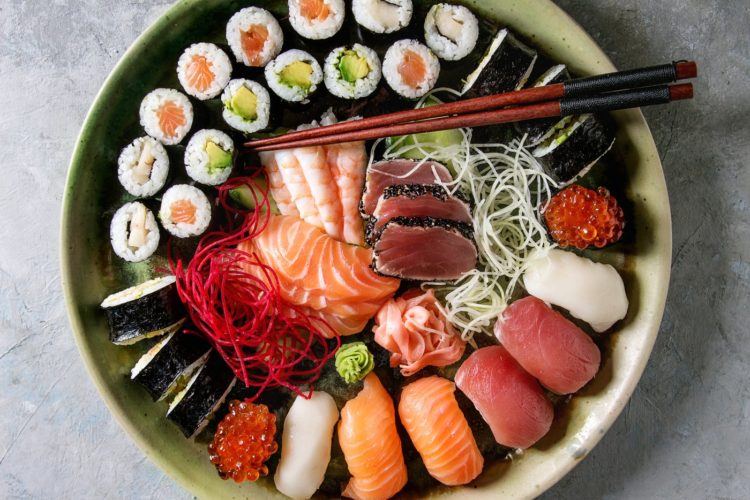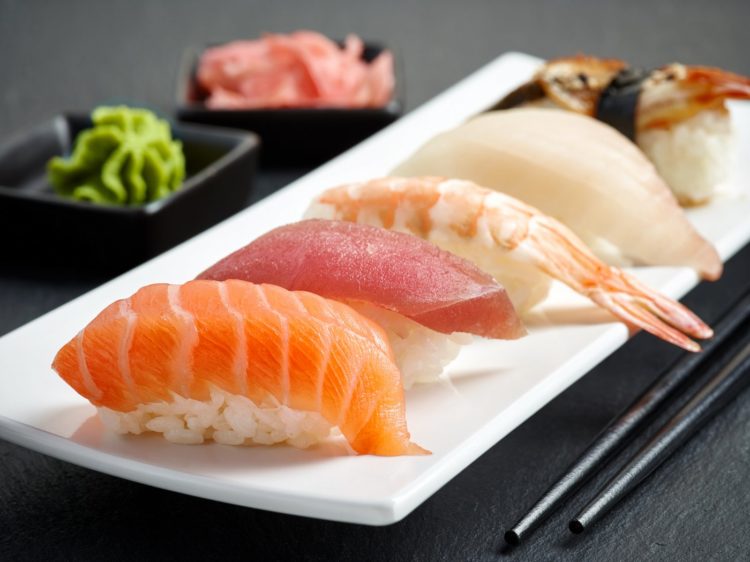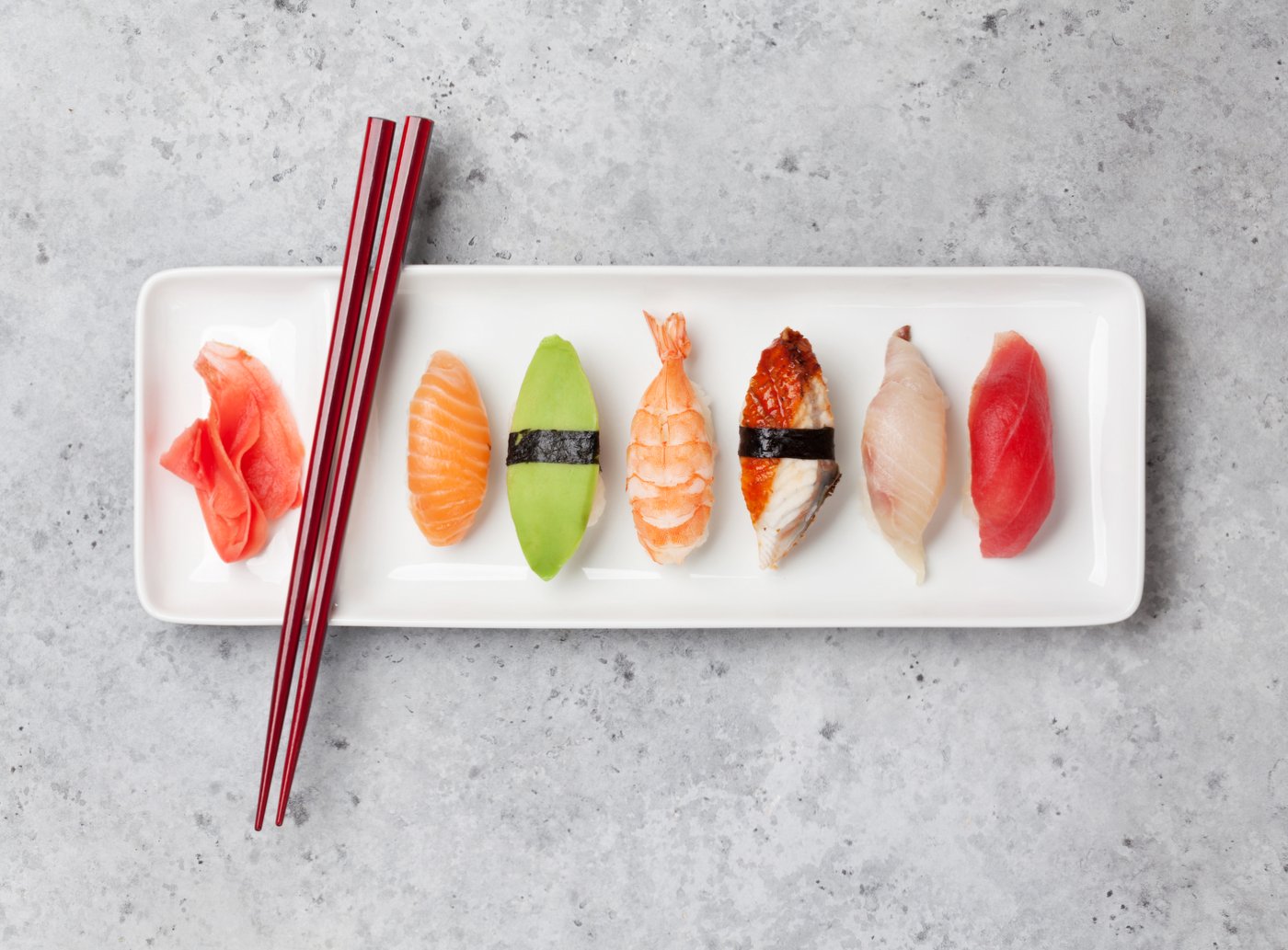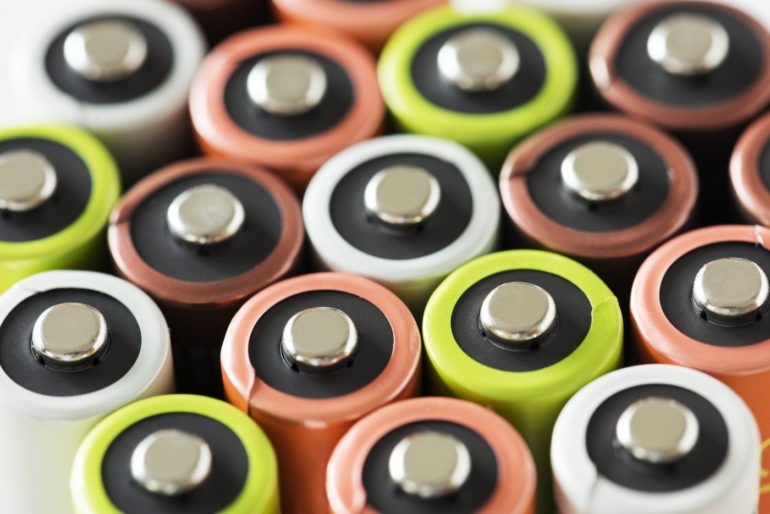How can sushi be safe to eat?
We cook chicken. We cook pork. We cook beef (okay, some of us more than others). So why do we eat raw fish? Is sushi really safe?
The why is pretty simple: to many of us, raw fish tastes fantastic, and has a completely different than cooked fish. As for the safety of eating uncooked fish… well, that’s pretty simple, too.
Hey, fish — freeze!
One big reason why sushi fans don’t have to worry about getting sick from eating raw fish is simple: The FDA says that any fish served as sushi in the US must first be frozen. Specifically, for seven days at -4 degrees F, or for 15 to 24 hours at -31 degrees F (depending on selling temperature). This kills any parasites that could be contained within the fish.
Furthermore, documentation is required to verify parasite destruction of each type of fish that will be served raw, partially-cooked or only marinated — except for Yellowfin tuna and Bigeye tuna (ahi), Northern bluefin tuna and Southern bluefin (maguro), and farm-raised, aqua-cultured fish.
When it comes to foodborne illness, the CDC reports that the number of people who fall victim to sushi-related illness is far, far lower than the number of people who fall victim to contaminated produce every year.
The most likely culprit for foodborne illness from eating sushi comes from the rice — bacillus cereus spreads rapidly at rice that sits at room temperature. Luckily, sushi rice is prepared with vinegar, lowering its pH to 4.1, killing most of the pesky microbes that make us sick.
Experts agree you’re far more at risk from e. coli or salmonella poisoning from undercooked beef and chicken, respectively, than you ever are from eating sushi.

Sushi safety: The raw deal
One thing to keep in mind, however, is certain types of fish can be high in mercury, which is poisonous to humans.
If you’re a casual sushi eater, you don’t really have much to worry about here, as the doses are low enough to be of little concern. If you are throwing down at the local sushi bar weekly, or are pregnant or planning on becoming pregnant, here’s a partial list of common fish known to be high in mercury content:
- Ahi (yellowfin tuna)
- Hamachi (young yellowtail)
- Kajiki (swordfish)
- Maguro (bigeye, bluefin, or yellowfin tuna)
- Saba (mackerel)
- Toro (bigeye, bluefin, or yellowfin tuna, sometimes called “fatty tuna”)
Careful with the puffer fish
Known as fugu — as well as blowfish and pufferfish, among other names — only come from two safe sources, according to the FDA. They need to be either imported puffer fish that have been processed and prepared by specially trained and certified fish cutters in Shimonoseki, Japan, or 2) puffer fish caught in the mid-Atlantic coastal waters of the United States.
The problem isn’t foodborne bacteria, and the stakes are much higher. The liver, gonads, intestines and skin of some puffer fish contain the toxins tetrodotoxin and/or saxitoxin, which are more deadly than cyanide and can affect your central nervous system. (Making the situation worse is that there are no known antidotes for these toxins.)
Therefore, fugu must be cleaned and prepared properly so the organs containing the toxins are carefully removed and don’t contaminate the fish flesh. (The toxins cannot be destroyed by cooking or freezing.)
Before ordering or buying puffer fish, ask where it came from — and when in doubt, skip the fugu and try something else.
To-go sushi’s short shelf life
Grabbing a container of ready-to-eat sushi from the grocery store? Be sure to say sayonara to any leftovers still in the refrigerator after 24 hours, a food safety expert says.
“Any signs of spoilage are bad, but just because it looks good doesn’t mean it’s safe,” said Keith Schneider, an associate professor of food science with the University of Florida’s Institute of Food and Agricultural Sciences.
Takeout and doggie bags from sushi restaurants should be eaten when you get home or thrown away, he said.
The problem is that foods can interact when they’re placed together. Inside a sushi roll, bacteria sometimes find ideal conditions in the spaces where moist ingredients come in contact with dry ones, or where foods with different pH meet. The result: faster spoilage.
“Sushi is meant to be consumed the day you buy it,” said Schneider, who co-authored a document on safe sushi preparation in retail operations with UF seafood expert Steve Otwell. “Each food item has a different spoilage rate so it’s difficult to put a shelf life on (sushi).”
Schneider says sushi hasn’t been associated with many reports of foodborne illness, but he nonetheless advocates a better-safe-than-sorry approach.
The term “sushi” covers many foods made with vinegar-treated rice and raw or cooked items such as meat, seafood and vegetables. Probably the best-known sushi varieties are makizushi, rolls wrapped in seaweed and sometimes coated with rice; and nigirizushi, rice mounds topped with a slice of fish or other seafood.
Raw fish might seem the biggest food-safety hazard in sushi, but Schneider says that’s not the case — it’s often frozen and thawed before use, to kill parasites.

Raw fish isn’t the only potential danger
Actually, rice is more likely to cause problems, he said. A bacterium called Bacillus cereus can grow in cooked rice if it’s not prepared and handled properly. That’s one reason vinegar is essential to good sushi rice — it provides acidity that discourages the bacterium.
Schneider cautions consumers who buy ready-to-eat sushi to minimize the chance it will warm up. Take it from the cooler just before purchase, bring it home quickly and refrigerate it immediately unless you plan to eat it right away.
“It’s not one of those things you want to leave on the counter,” he said.
Packaged sushi sold in supermarkets is often made by specialty companies via franchises within the stores. The biggest such company in North America is Advanced Fresh Concepts (AFC) based in Rancho Dominguez, California, which sold Southern Tsunami brand sushi in more than a hundred supermarket chains.
Jeff Seiler, AFC’s compliance director, agrees with Schneider’s 24-hour recommendation, and suggests consumers eat ready-to-eat sushi as soon as they get home to ensure the best flavor.
Cheap sushi more and more common
Though sushi is often associated with pricey restaurants, in the past decades, inexpensive sushi has become more available and popular in the United States, said Sasha Issenberg, a Philadelphia-based journalist who authored The Sushi Economy: Globalization and the Making of a Modern Delicacy.
“Wal-Mart opened in Plano, Texas, with a sushi bar in it,” he said. “I think people see it as sort of a clean, healthy alternative to other fast foods at the same level of convenience.”
Statistics on ready-to-eat sushi sales are sparse, but Issenberg reported in his book that one survey indicated 30 million US adults eat sushi regularly.
And though the idea of grocery shoppers picking up packaged sushi along with dog food and dish soap may rankle some aficionados, Issenberg says from a historical perspective, this trend is simply a return to sushi’s roots.
In the late 19th century, sushi was a low-cost snack sold by Tokyo street vendors, he said. Only later did this proto-fast food become glamorous and expensive.
The first US sushi bar opened in Los Angeles’ Little Tokyo in 1964, an upscale establishment frequented by Japanese-American businessmen.
“In Japan, (sushi’s) origins are far closer to the experience of going to a supermarket and getting takeout and bringing it home, than actually sitting down in a sushi bar and spending $100 on your dinner and eating it there,” he said.







